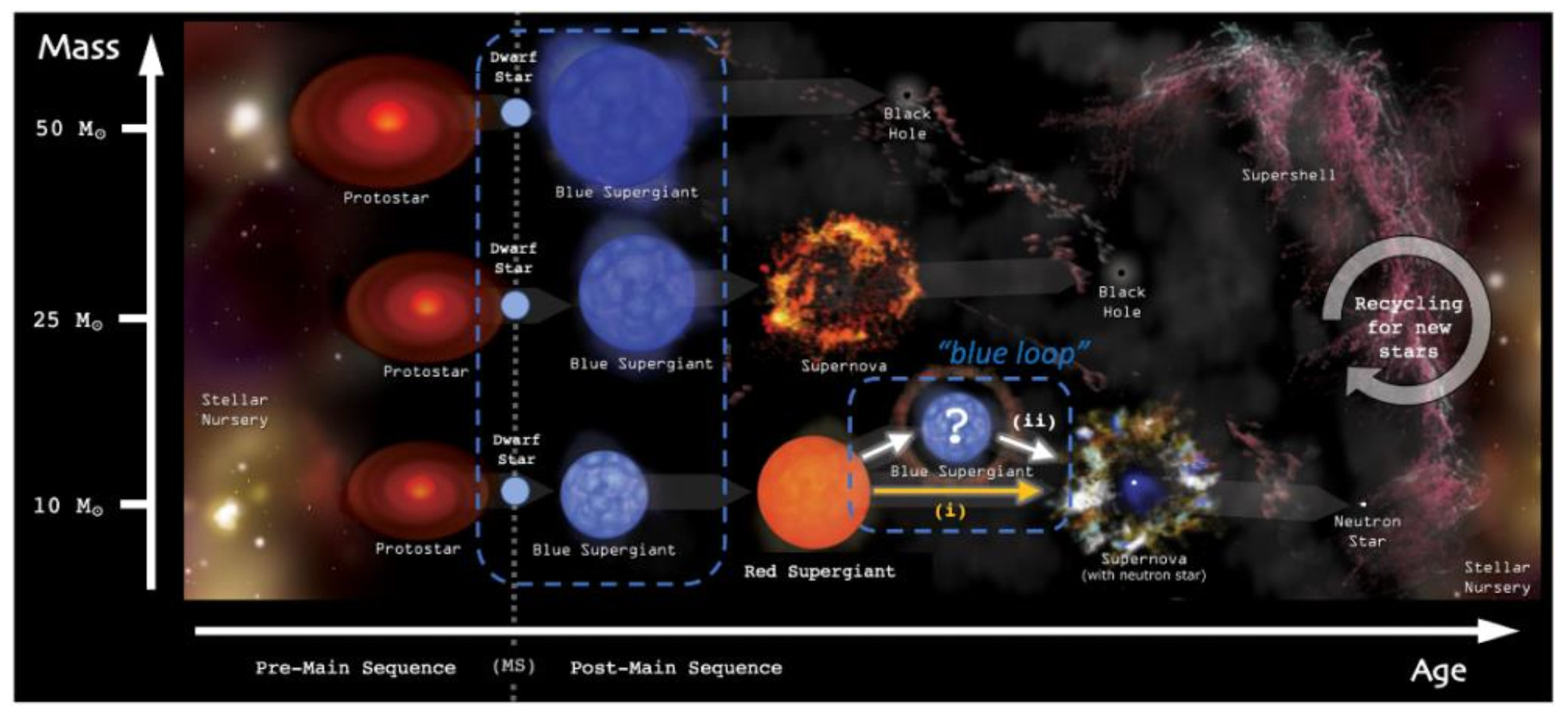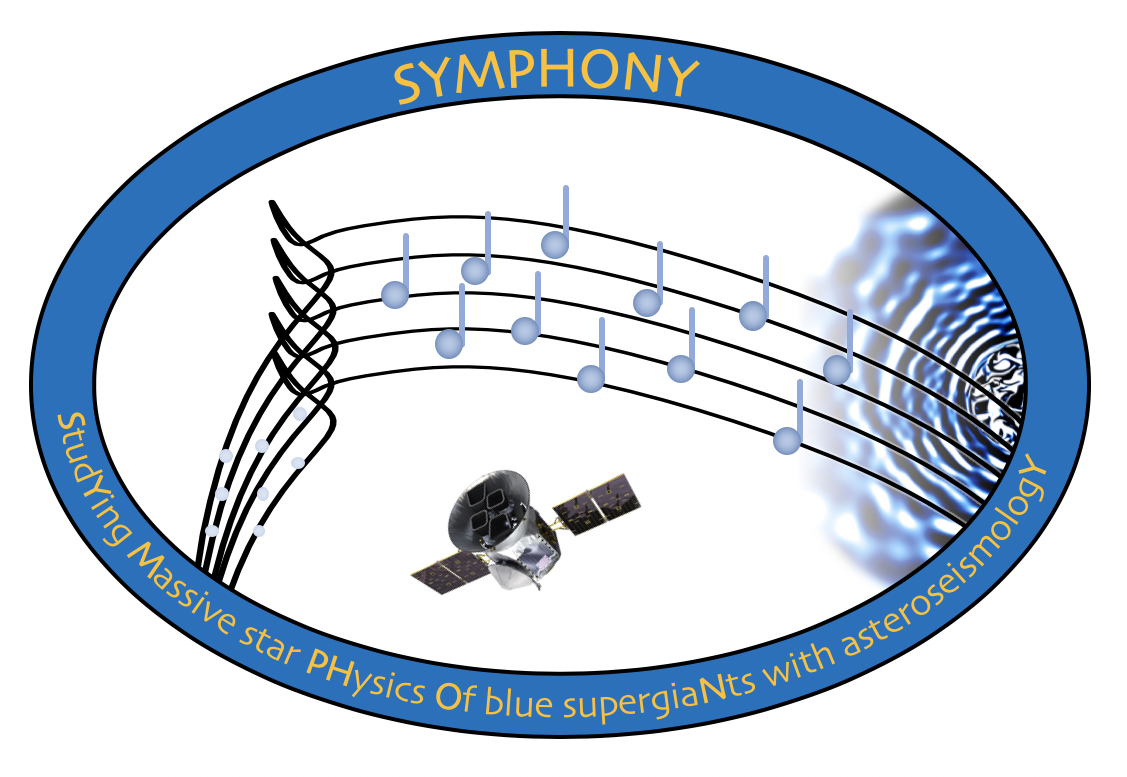Background
The Universe is shaped by the lives and explosive deaths of massive stars, which have birth masses larger than approximately eight times that of the Sun. Their large luminosities, mass loss and supernova explosions enrich their surroundings with energy and chemical elements. This provides the chemistry for new generations of stars and planets, and governs the chemical and dynamical evolution of galaxies. The properties of massive stars mean they can be observed at large distances, hence allowing the early Universe, including the epochs of reionisation and the first galaxies, to be studied. The exotic compact remnants of massive star evolution are neutron stars and black holes, with the latter being end products for high-mass progenitor stars. These remnants facilitate important tests of Einstein's theory of General Relativity and the study of the Universe using gravitational waves when they coalesce.
It is clear that massive stars play a pivotal role across all aspects of astrophysics. Hence understanding their physical processes, which govern their evolution and dictate their ultimate fate, is of paramount importance in astronomy. However, there are currently large theoretical uncertainties in state-of-the-art stellar structure and evolution models, specifically the interior rotation and chemical mixing profiles, and angular momentum transport mechanisms. In models of low-mass stars, prescriptions for these mechanisms are scaling laws based on the Sun. Inference of massive star interiors is lacking, as only their surface properties have generally been used to assess their interiors. Therefore, the physics in stellar structure and evolutionary models needs to be calibrated by observations that probe stellar interiors. This is particularly important for evolved massive stars known as blue supergiants, as their interior properties are crucial in determining their evolutionary fate. In turn this directly impacts the chemical yield of the supernova and mass of the compact remnant.
 (c) Image Credit: NASA, adapted by D. Bowman.
(c) Image Credit: NASA, adapted by D. Bowman.




